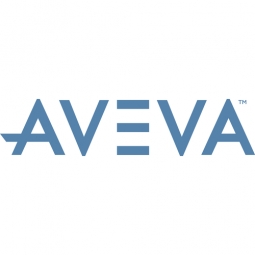下载PDF
New Belgium Brewing Improves Performance and Meets Customer Demands
技术
- 功能应用 - 制造执行系统 (MES)
适用行业
- 食品与饮料
适用功能
- 离散制造
- 质量保证
用例
- 预测性维护
- 自动化制造系统
服务
- 系统集成
- 软件设计与工程服务
挑战
New Belgium Brewing, the third largest craft brewery and eighth largest overall brewery in the U.S., was facing challenges in meeting the growing demand for its products. The brewery lacked real-time information on unscheduled downtimes at various equipment areas, which caused production slowdowns. The production staff were continually reacting to unscheduled downtime at equipment areas. Management needed to address gaps in methods and processes to drive improvements. The bottling operation lacked the ability to predict capabilities to effectively commit brewery staff to specific production goals.
关于客户
New Belgium Brewing Co. is a multi-million dollar success story in the American craft brewing industry. The company, which started as a beer brewing hobby, has grown to become the nation's third largest craft brewery and eighth largest overall brewery since 2012. The company produces some of the world's most popular craft brews, including Fat Tire and a multitude of other popular IPA, Pilsner, wheat beers and ales. The company is based in Fort Collins, Colorado, USA.
解决方案
New Belgium Brewing implemented a series of manufacturing automation initiatives over the last five years to streamline and improve its brewing and bottling facility. The company expanded its current Wonderware by AVEVA automation software capabilities to take advantage of its full Manufacturing Execution System capabilities. With the technical assistance of Apex Manufacturing Solutions, New Belgium achieved record levels of efficiencies in scheduled and non-scheduled downtime throughout its operations with the implementation of AVEVA’s Manufacturing Execution System software. The software provided greater visibility and a true understanding of actual production capacity for predictable order fulfillment. The brewery’s existing systems provided huge amounts of data, but with no context. The management team needed a way to effectively collect and analyse that data in order to turn it into actionable information.
运营影响
数量效益
相关案例.

Case Study
The Kellogg Company
Kellogg keeps a close eye on its trade spend, analyzing large volumes of data and running complex simulations to predict which promotional activities will be the most effective. Kellogg needed to decrease the trade spend but its traditional relational database on premises could not keep up with the pace of demand.

Case Study
HEINEKEN Uses the Cloud to Reach 10.5 Million Consumers
For 2012 campaign, the Bond promotion, it planned to launch the campaign at the same time everywhere on the planet. That created unprecedented challenges for HEINEKEN—nowhere more so than in its technology operation. The primary digital content for the campaign was a 100-megabyte movie that had to play flawlessly for millions of viewers worldwide. After all, Bond never fails. No one was going to tolerate a technology failure that might bruise his brand.Previously, HEINEKEN had supported digital media at its outsourced datacenter. But that datacenter lacked the computing resources HEINEKEN needed, and building them—especially to support peak traffic that would total millions of simultaneous hits—would have been both time-consuming and expensive. Nor would it have provided the geographic reach that HEINEKEN needed to minimize latency worldwide.

Case Study
Energy Management System at Sugar Industry
The company wanted to use the information from the system to claim under the renewable energy certificate scheme. The benefit to the company under the renewable energy certificates is Rs 75 million a year. To enable the above, an end-to-end solution for load monitoring, consumption monitoring, online data monitoring, automatic meter data acquisition which can be exported to SAP and other applications is required.

Case Study
Coca Cola Swaziland Conco Case Study
Coco Cola Swaziland, South Africa would like to find a solution that would enable the following results: - Reduce energy consumption by 20% in one year. - Formulate a series of strategic initiatives that would enlist the commitment of corporate management and create employee awareness while helping meet departmental targets and investing in tools that assist with energy management. - Formulate a series of tactical initiatives that would optimize energy usage on the shop floor. These would include charging forklifts and running cold rooms only during off-peak periods, running the dust extractors only during working hours and basing lights and air-conditioning on someone’s presence. - Increase visibility into the factory and other processes. - Enable limited, non-intrusive control functions for certain processes.

Case Study
Temperature Monitoring for Restaurant Food Storage
When it came to implementing a solution, Mr. Nesbitt had an idea of what functionality that he wanted. Although not mandated by Health Canada, Mr. Nesbitt wanted to ensure quality control issues met the highest possible standards as part of his commitment to top-of-class food services. This wish list included an easy-to use temperature-monitoring system that could provide a visible display of the temperatures of all of his refrigerators and freezers, including historical information so that he could review the performance of his equipment. It also had to provide alert notification (but email alerts and SMS text message alerts) to alert key staff in the event that a cooling system was exceeding pre-set warning limits.

Case Study
Coca-Cola Refreshments, U.S.
Coca-Cola Refreshments owns and manages Coca-Cola branded refrigerators in retail establishments. Legacy systems were used to locate equipment information by logging onto multiple servers which took up to 8 hours to update information on 30-40 units. The company had no overall visibility into equipment status or maintenance history.





